Wednesday, April 10, 2024
They came prepared. Armed with certified eclipse glasses and special filters for cell phone cameras, crowds took to the streets, parks and rooftops across the city April 8 for a glimpse of what was billed as the Great American Eclipse.
“It was amazing to watch,” said Lenore Marema, who viewed the cosmic phenomenon with neighbors at Ben Brenman Park. “You could see the moon coming across the sky – it wasn’t a total eclipse but almost.”
Totality began in the U.S. at Eagle Pass, Texas at 1:27 pm CDT with a maximum duration of 4 minutes and 27 seconds and a shadow velocity of 1,587 miles per hour. Totality ended in Houlton, Maine in the first total eclipse of the sun to traverse the U.S. since August of 2017.
While not in the path of totality, Alexandrians were able to witness a partial eclipse, with about 87 percent of the sun being obscured as the moon passed between the sun and Earth. Locally, the eclipse began at 2 p.m., reached its peak at 3:28 p.m. and ended at 4:35 p.m.
“While it was beautiful watching the eclipse, what made it special was doing it here in a community setting,” said Michelle Rempey, who watched with Cameron Station neighbors at Ben Brenman Park. “How often does that happen in the DC area?”
According to NASA, the next total solar eclipse viewable from the contiguous U.S. will be on Aug. 23, 2044. Alaska will see a total solar eclipse in 2033.
Added Rempey, “Everybody coming together, being in one place and doing this together – any experience we have like this in this area is really special.”
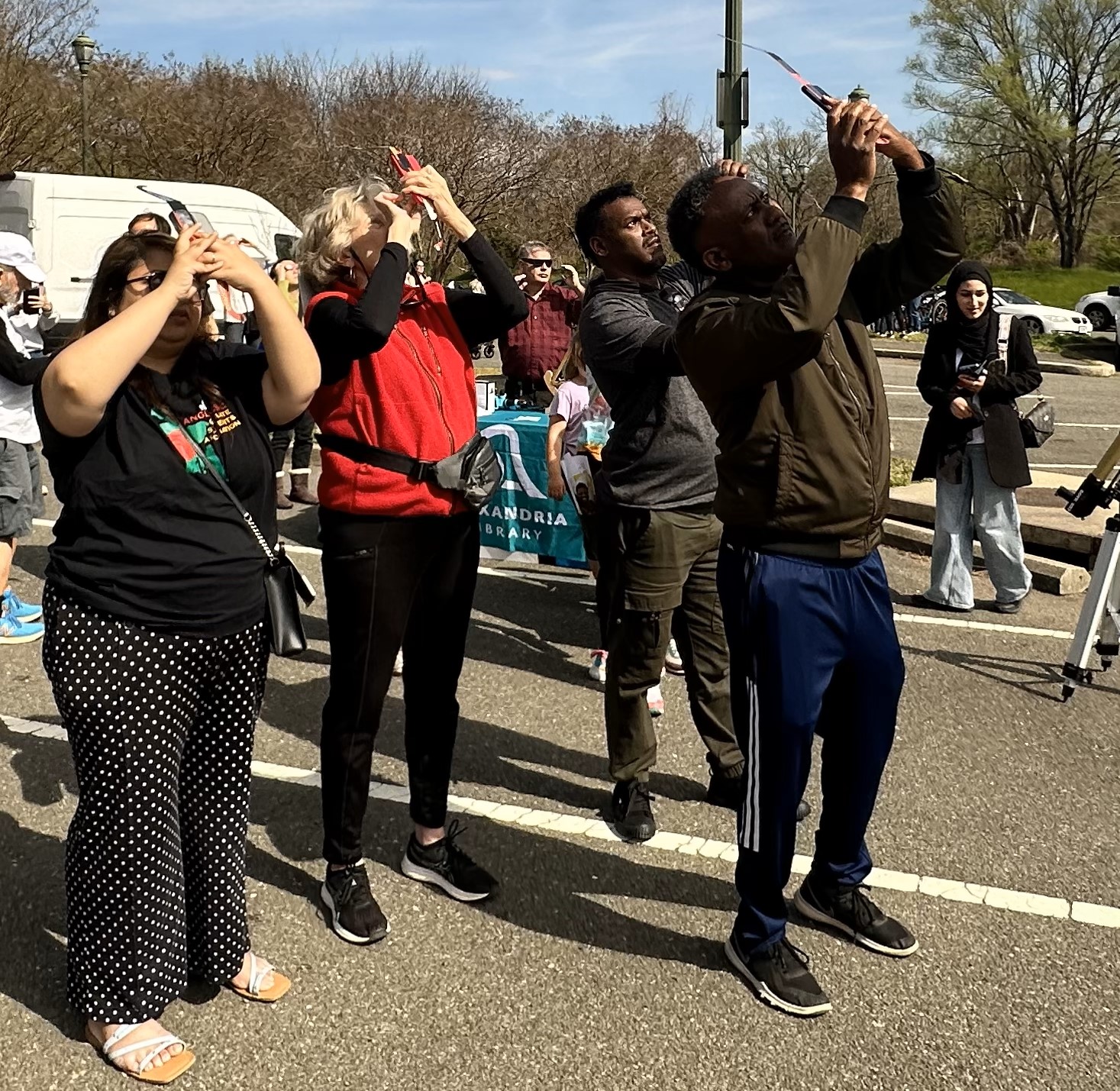
Visitors to Ben Brenman Park use special filters to take photos of the solar eclipse with cell phone cameras April 8.
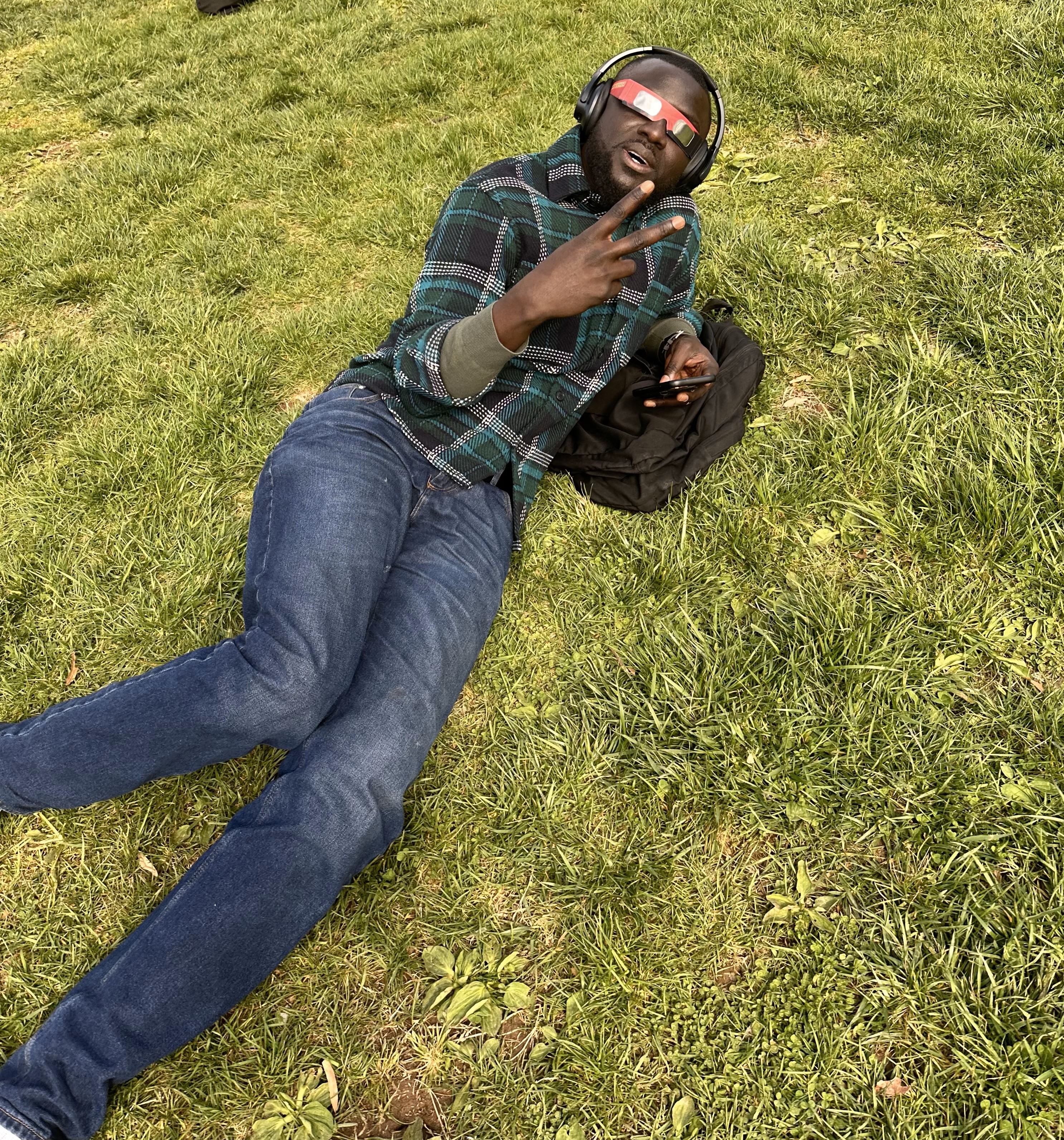
Equipped with special glasses, a resident enjoys the solar eclipse April 8 at Ben Brenman Park.
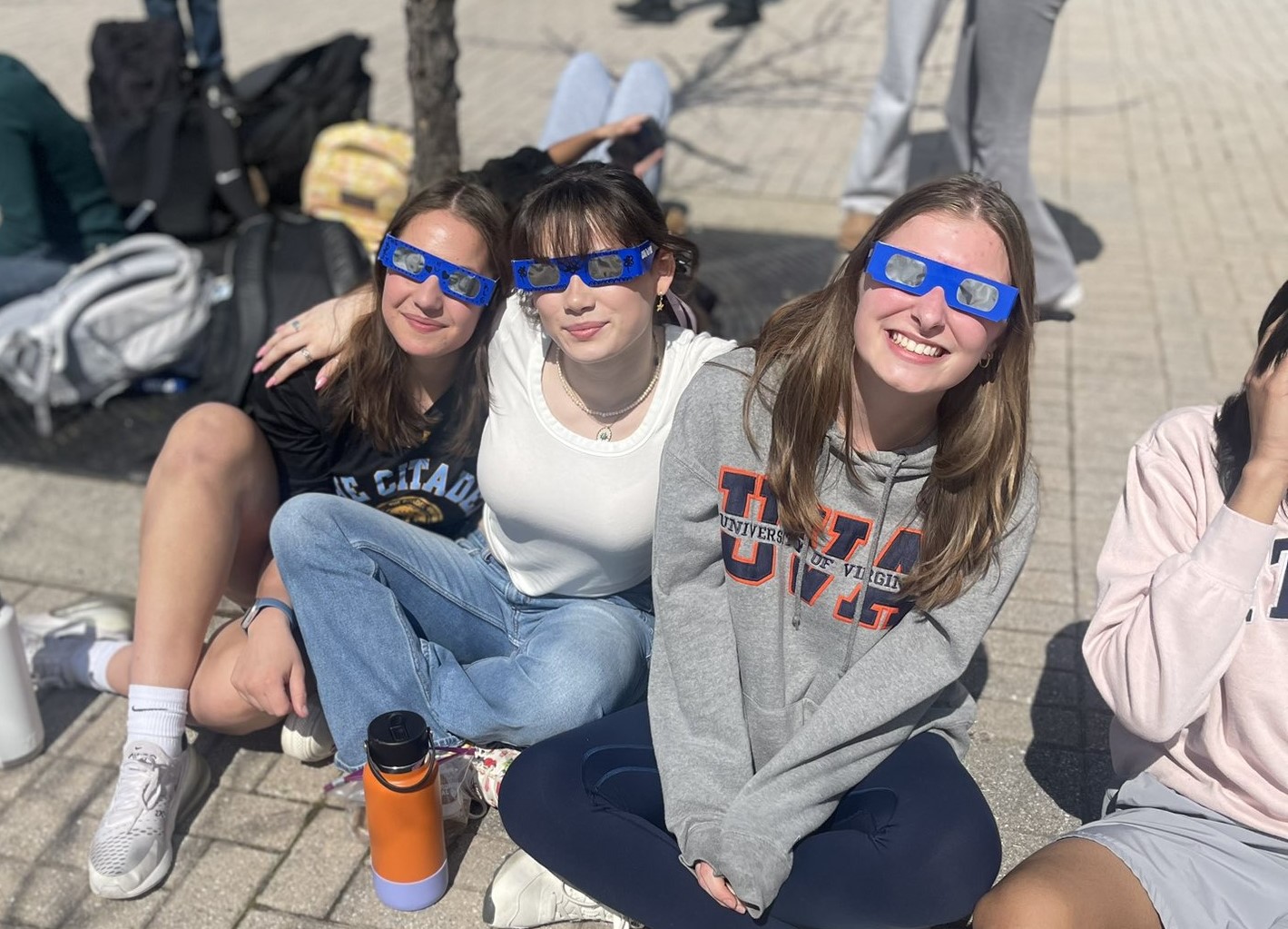
Students enjoy the solar eclipse festivities April 8 at the ACHS campus.
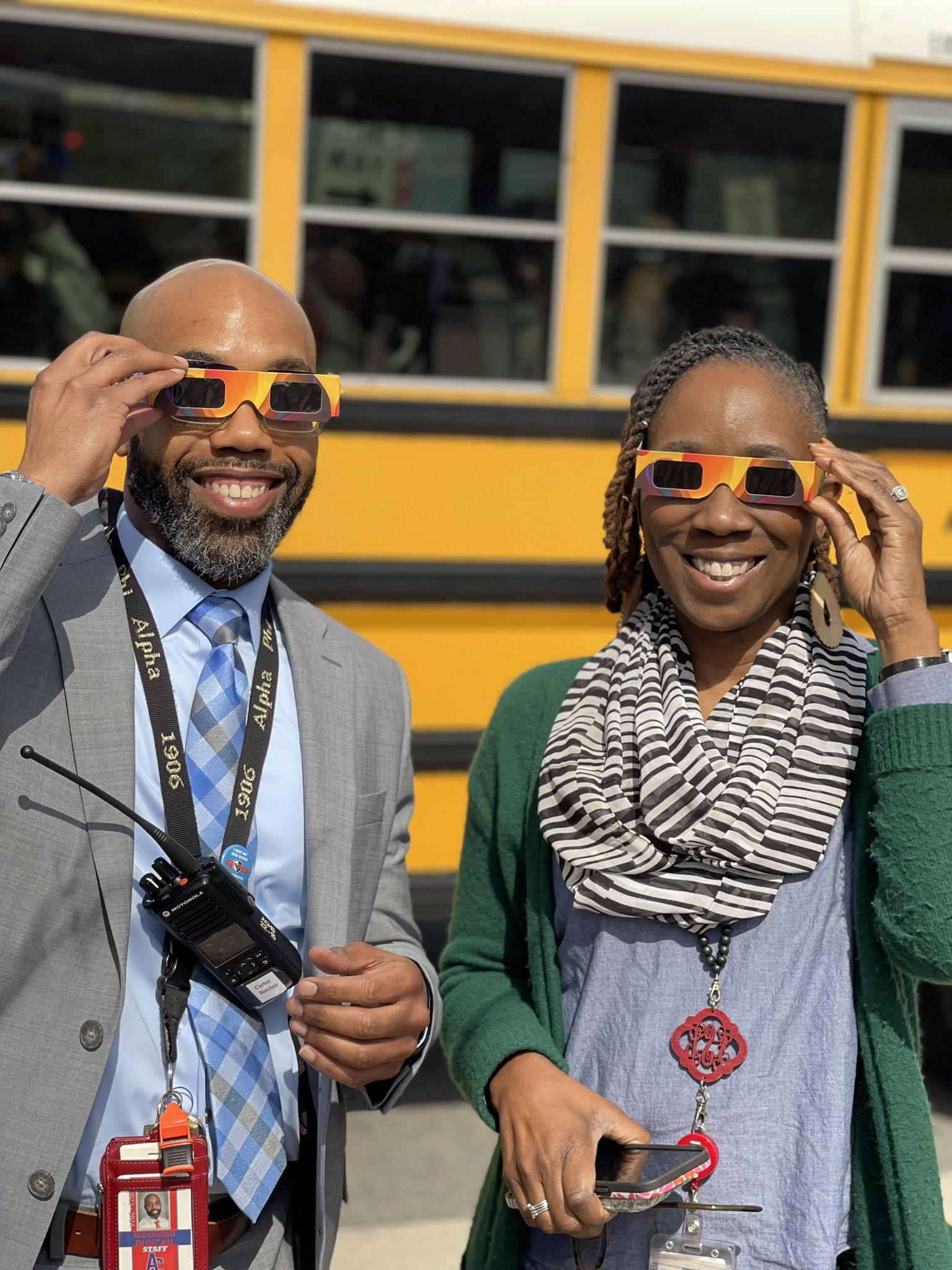
Alexandria City High School Principal Alexander Duncan III, left, watches the eclipse from the ACHS campus.
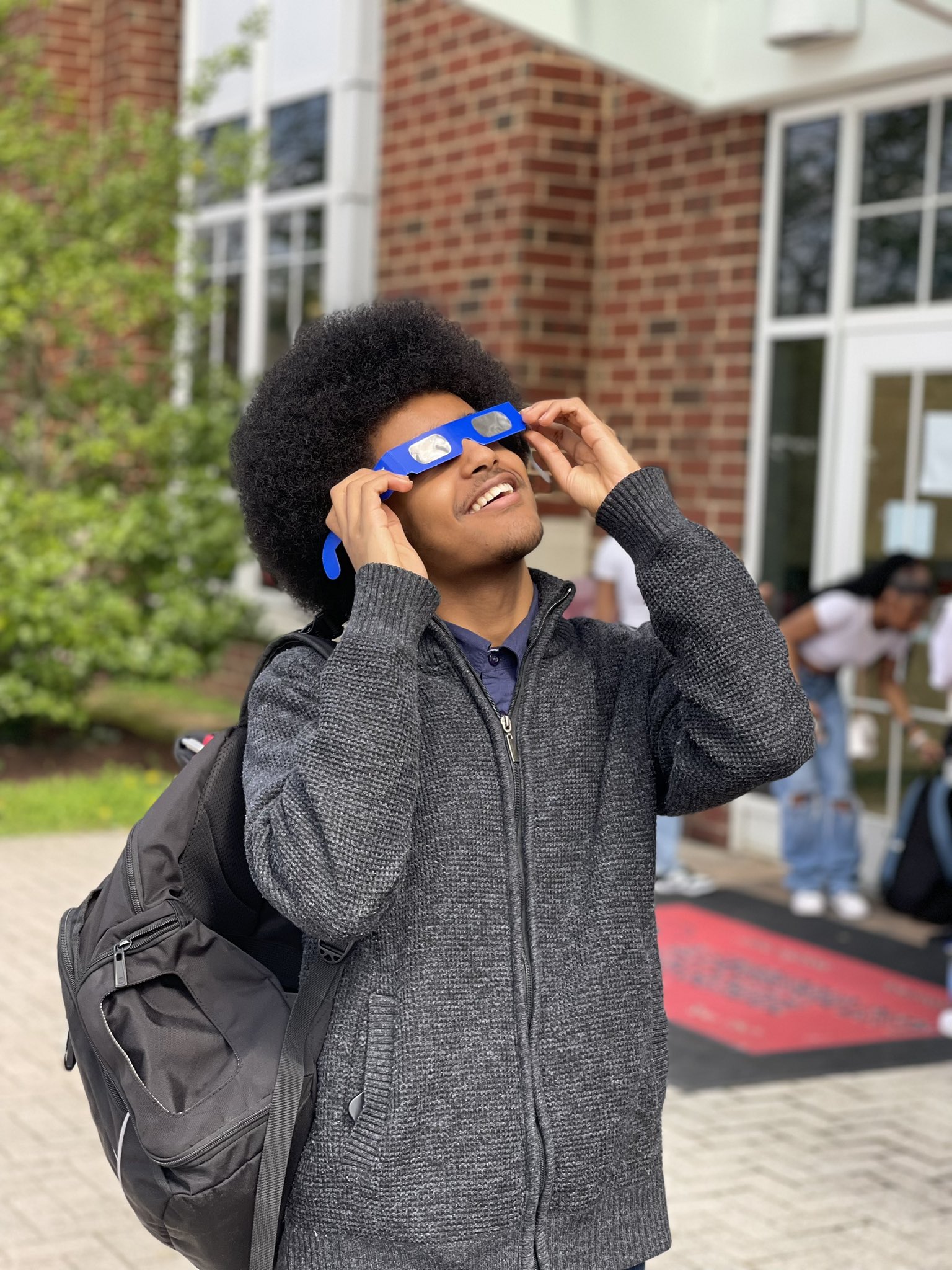
A student catches a glimpse of the solar eclipse April 8 at the ACHS campus.